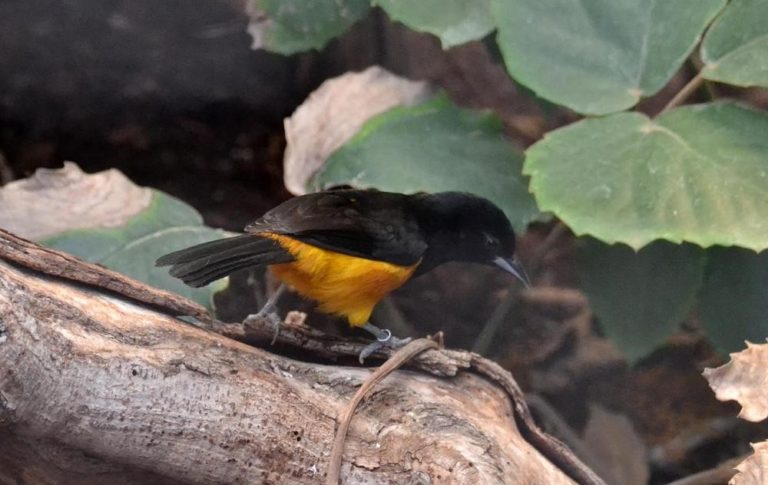Birdfinding.info ⇒ A rare species that is often elusive in its tiny range as it is habitually quiet and inconspicuous. The eruptions of 1995 and ’96 either destroyed or isolated formerly reliable sites in the Soufriere Hills. In the remnants of its range, the nature trail at Runaway Ghault is the most accessible established site.
Montserrat Oriole
Icterus oberi
Endemic to Montserrat, where it is mostly confined to two patches of wet montane forest: the Centre Hills and the South Soufriere Hills (a total area of about 1,350 hectares).
From 1995 to 2010, eruptions of the Soufriere volcano destroyed over half of Montserrat’s forest. The oriole’s population declined in most of those years, leading IUCN to designate it as Critically Endangered.
Since 2010, the volcano has been quiet and the oriole has shown annual increases. With its population estimated at around 500 birds and increasing, in 2016 IUCN revised its status to Vulnerable.
Identification
The male is mostly black above, with a full black hood and all-black back, wings, and tail. The lower breast, belly, and rump are tawny or burnt-orange.
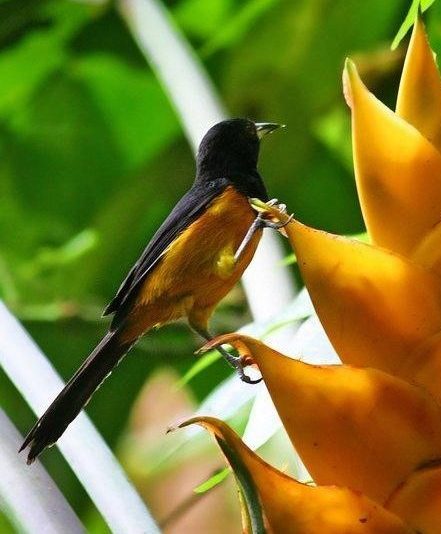
Montserrat Oriole, male. (Montserrat; April 30, 2011.) © Tavez Aymer
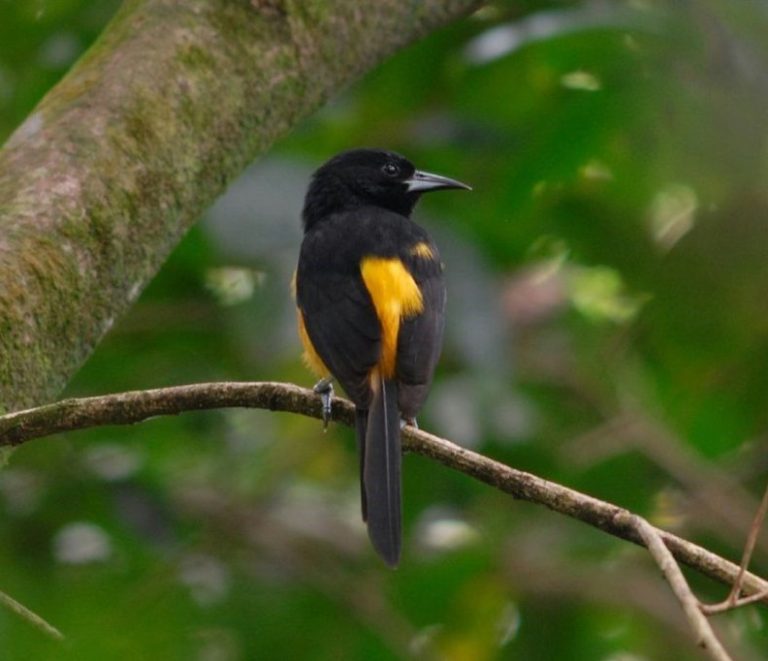
Montserrat Oriole, male showing tawny-orange rump. (Montserrat; April 12, 2013.) © Alistair Homer
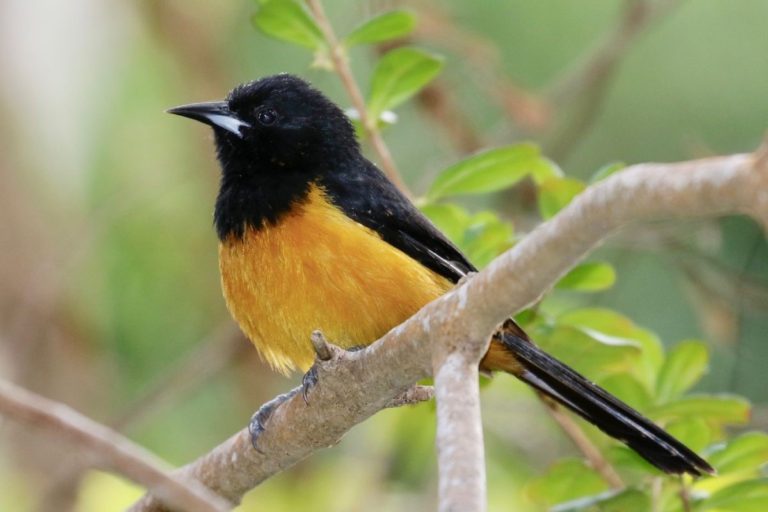
Montserrat Oriole, male. (Centre Hills, Montserrat; April 13, 2018.) © Bird Explorers
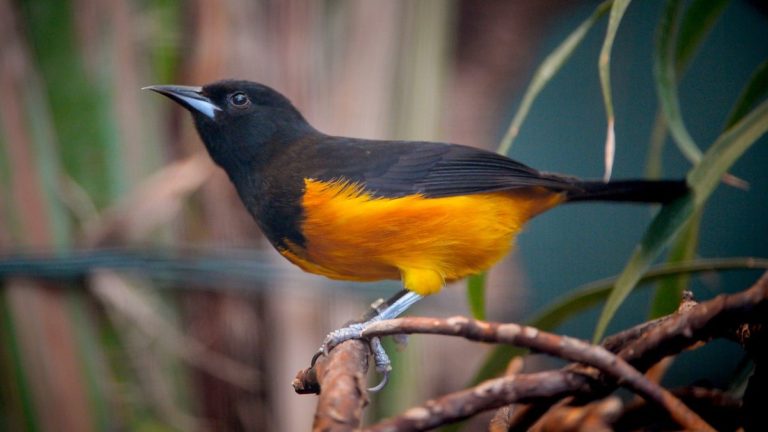
Montserrat Oriole, male—a zoo-raised bird showing an unusually vivid shade of orange on its underparts. © Chester Zoo
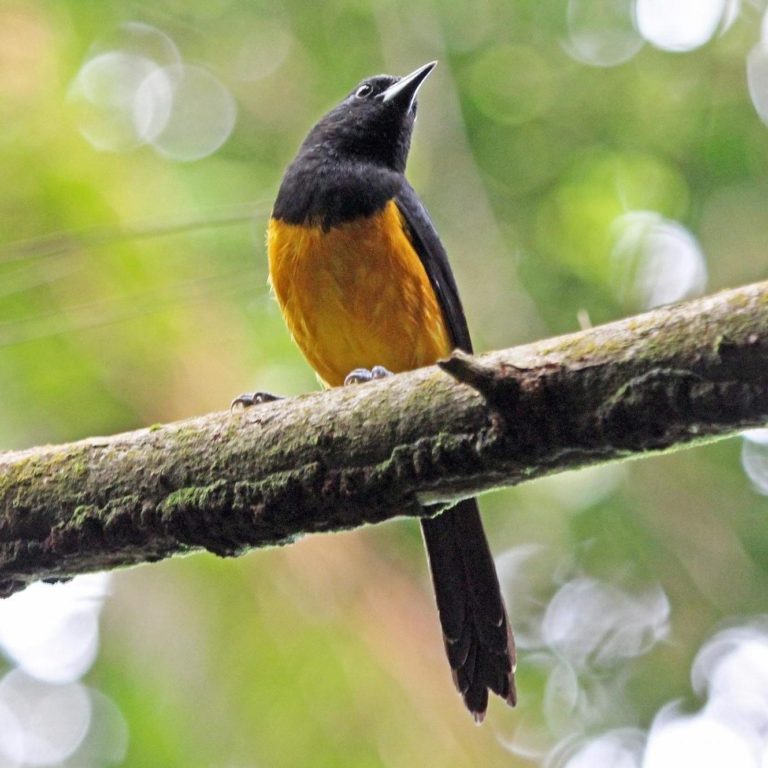
Montserrat Oriole, male. (Montserrat; April 12, 2013.) © Greg Griffith
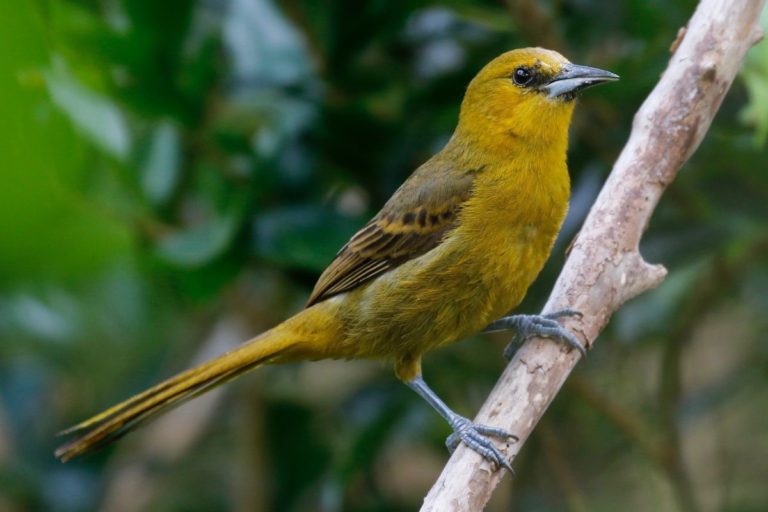
Montserrat Oriole, female. (Centre Hills, Montserrat; April 13, 2018.) © Bird Explorers
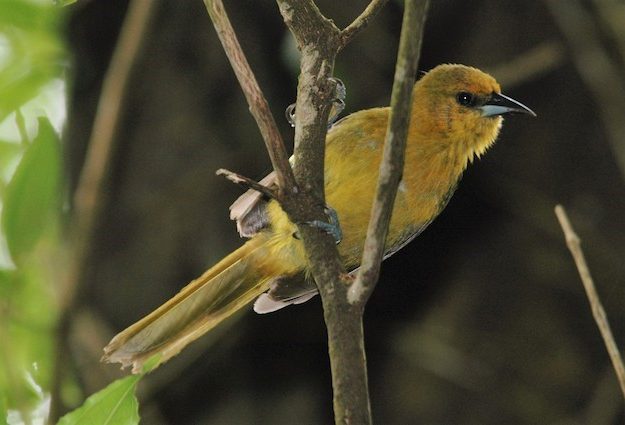
Montserrat Oriole, female. (Montserrat; July 3, 2008.) © Andrew Dobson
Females and immatures are olive overall, often appearing somewhat orange on the head and underparts, and browner on the wings and back.
Females are distinguished by having blackish lores.

Montserrat Oriole, immature. (Montserrat; June 2016.) © Pete Morris
Voice. The song is a series of loud, musical whistles: The common call (at least when alarmed) is a rapid series of chuk notes:
Notes
Monotypic species.
IUCN Red List Status: Vulnerable. From 2003 to 2016, IUCN classified it as Critically Endangered.
References
Allcorn, R.I., G.M. Hilton, C. Fenton, P.W. Atkinson, C.G.R. Bowden, G.A.L. Gray, M. Hulme, J. Madden, E.K. Mackley, and S. Oppel. 2012. Demography and Breeding Ecology of the Critically Endangered Montserrat Oriole. Condor 114:227-235.
BirdLife International 2017. Icterus oberi (amended version of 2017 assessment). The IUCN Red List of Threatened Species 2017: e.T22724147A119465859. http://dx.doi.org/10.2305/IUCN.UK.2017-3.RLTS.T22724147A119465859.en. (Accessed May 23, 2019.)
eBird. 2019. eBird: An online database of bird distribution and abundance. Cornell Lab of Ornithology, Ithaca, N.Y. http://www.ebird.org. (Accessed May 23, 2019.)
Fraga, R., E. de Juana, and C.J. Sharpe. 2019. Montserrat Oriole (Icterus oberi). In Handbook of the Birds of the World Alive (J. del Hoyo, A. Elliott, J. Sargatal, D.A. Christie, and E. de Juana, eds.). Lynx Edicions, Barcelona. https://www.hbw.com/node/62273. (Accessed May 23, 2019.)
Hurrell, S., and S. Havery. 2016. The Montserrat Oriole is no longer Critically Endangered. BirdLife, December 2016.
Jaramillo, A., and P. Burke. 1999. New World Blackbirds: The Icterids. Princeton University Press, Princeton, N.J.
Oppel, S., A. Cassini, J. Daley, and C. Fenton. 2012. Montserrat Oriole (Icterus oberi), version 1.0. In Neotropical Birds Online (T.S. Schulenberg, ed.). Cornell Lab of Ornithology, Ithaca, N.Y. https://doi.org/10.2173/nb.monori1.01.
Raffaele, H., J. Wiley, O. Garrido, A. Keith, and J. Raffaele. 1998. A Guide to the Birds of the West Indies. Princeton University Press, Princeton, N.J.
Wauer, R.H. 1996. A Birder’s West Indies: An Island-by-Island Tour. University of Texas Press, Austin.
